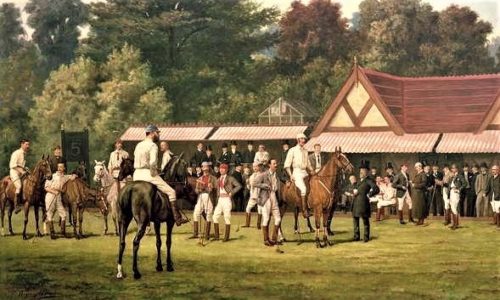
Equestrian polo
‘Hockey on horseback’ originated in Persia, China and Asia and the British first caught onto it in India in the 1850s. They set up polo clubs, the first being in Manipur in 1859, then the Calcutta Polo Club in 1861. Major General Joseph Ford Sherer (1829-?) is credited as ‘The Father of Polo’, meaning the form of the sport which he introduced to Britain.
The name ‘polo’ derives either from the Indian word ‘pulu’ or the Tibetan word ‘pholo’, both of which mean ‘ball’. The sport is fast-moving, with the ball travelling at up to 100mph. The match is split into four to eight ‘chukkas’, meaning rounds, of 7-7½ minutes. After the third and sixth chukka, spectators come onto the field to stamp down any divots.
In the UK there are over a hundred clubs today, most of them outdoor but some with indoor arenas, which are slightly smaller. The horses are called ‘polo ponies’ no matter how big they are, and they certainly have a good run-around during a match. They must be strong and agile to withstand the riders, four on each team (three indoors), wielding their mallets to whack the ball, according to rules formulated by the Hurlingham Club in London in 1875.
(Top image of polo at Hurlingham 1890 by Henry Jamyn Brooks: Wikimedia Commons / Public domain)
